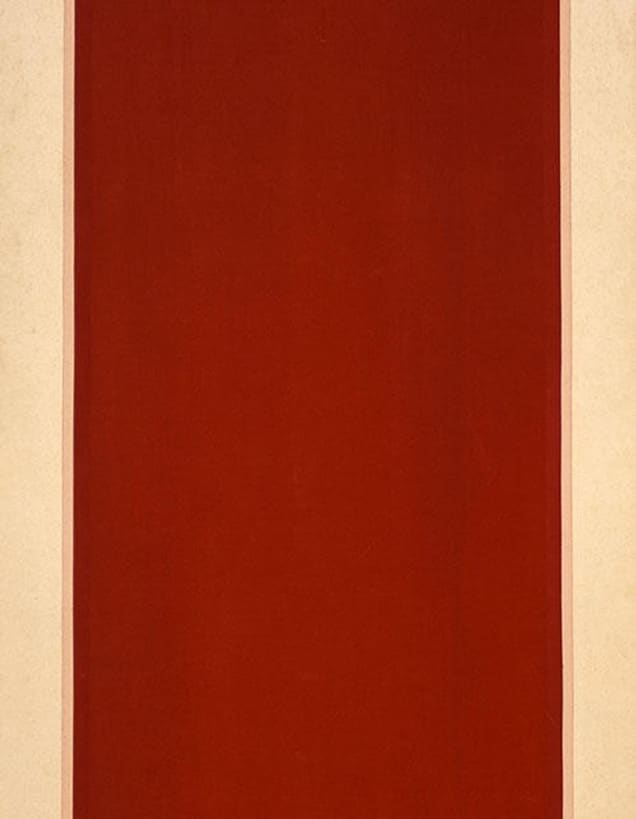about the work
According to his wife, Downing always painted on the floor. He would dilute the paint with water and lay raw canvas flat across the floor stapling it down, afterward soaking the canvas in the paint to create his characteristically vivid, hard-edged fields of color. Pinnacle is an excellent example of this method. Like so much of Downing’s work, it is, more than anything else, a visual record of the monumental, uncompromising stubbornness and dedication with which he pursued his craft. In the words of former Corcoran director James Harithas, “He stayed much closer to the original idea [of the Washington Color School] than any of the others. Every time we met we talked of the same thing – the spirituality of color.”
about the artist
Tom Downing once wrote, “that which is properly termed art is cultivated through the practice of timelessness.” Grandiose pronouncements like this – statements about art as a whole, often made in the style of formulas, were characteristic of the period of American art in which Downing came of age. Compare the obscurity and vaguely religious flavor of Downing’s statement to Clement Greenberg, -“realistic, naturalistic art had dissembled the medium, using art to conceal art; Modernism used art to call attention to art”, or to seminal minimalist Donald Judd, “I think the [art] experience involves a certain immediacy between you and the canvas, you and the particular kind of experience of that particular moment.”
Downing, like many mid-twentieth-century American painters, was searching for a new approach to art-making by experimenting with different ways to use traditional mediums. Part of this experimentation was with the philosophical underpinnings of their work – thus the strange verbiage recounted above. Mid-century artists had a tendency, although they often thought of and spoke of themselves as ascetics, to describe art in dramatic terms. But their work itself was quite authentically ascetic. The work of well-known artists from this period such as Judd, Stella, etc. can be described without exception as hard, austere, and rigorous. Although Downing was as dedicated as these more famous painters, he never had their visibility, and his work never commanded similar prices.
Downing was a mercurial character who frequently argued with jurors and gallerists over how his work ought to be perceived and exhibited, sometimes even coming to blows. At times he would refuse to sell his works at any price, while at others he practically gave it away. In 1964 he had been one of a select group of artists chosen to exhibit in the Sao Paulo Biennale, an exhibition that catapulted Judd, Stella, and Barnett Newman, among others, to stardom. But Downing unexpectedly declined the juror’s invitation to exhibit at the Biennale and as a result worked in relative obscurity for the rest of his life.

